By TREVOR HOGG
Images courtesy of Netflix.
By TREVOR HOGG
Images courtesy of Netflix.
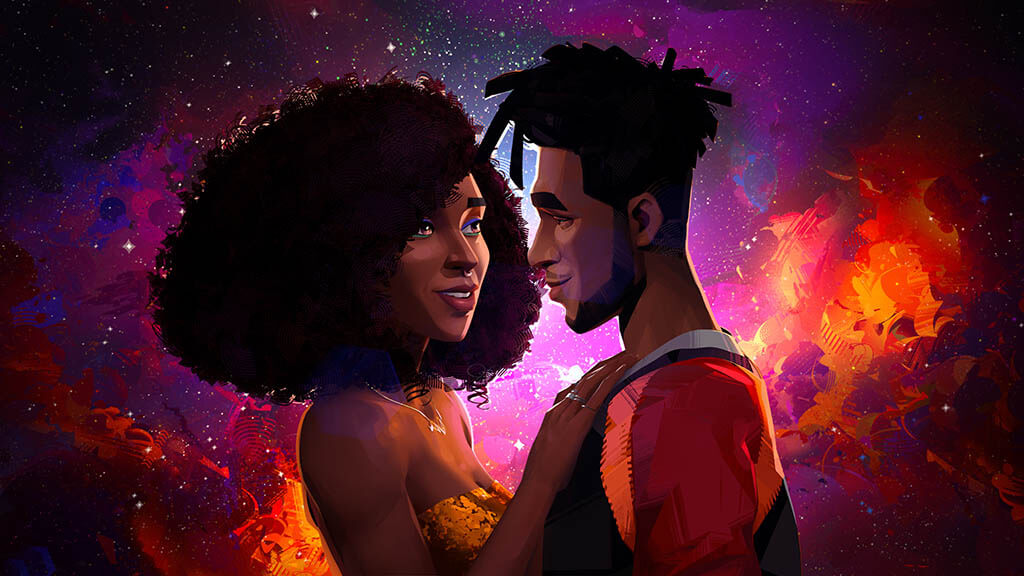
For the cosmic scenes, an abstract rather then realistic approach was adopted.
Drugs, love and murderous artwork are all part of the world of Entergalactic, an animated feature created by American rapper Scott “Kid Cudi” Mescudi and producer Kenya Barris and directed by Fletcher Moules for Netflix.
The creative directive for DNEG Animation was to produce a painterly aesthetic. “When I first saw the artwork, I almost fell off my chair,” laughs Archie Donato, Visual Effects Supervisor at DNEG Animation. “I spent 17 years at DreamWorks, and while I loved working there, there was very little experimentation with the push look. I was genuinely craving not only the artistic freedom, but also the challenge of, ‘How the heck are we going to do this?’” Communication was a big factor, especially with everyone working remotely because of the pandemic. “How do we create this world that is made in CG that looks 2D and a 2.5D somewhere in the middle?” states Chrissy Metge, Digital Producer at DNEG Animation. “The anticipation was it would be hard to communicate how we’re achieving this within the time frame that we had available, and it was hard to communicate between ourselves and client, the client back with Netflix and vice versa. At the end of the day, it came down to trusting all of us, trying things out and creating a safe space.”
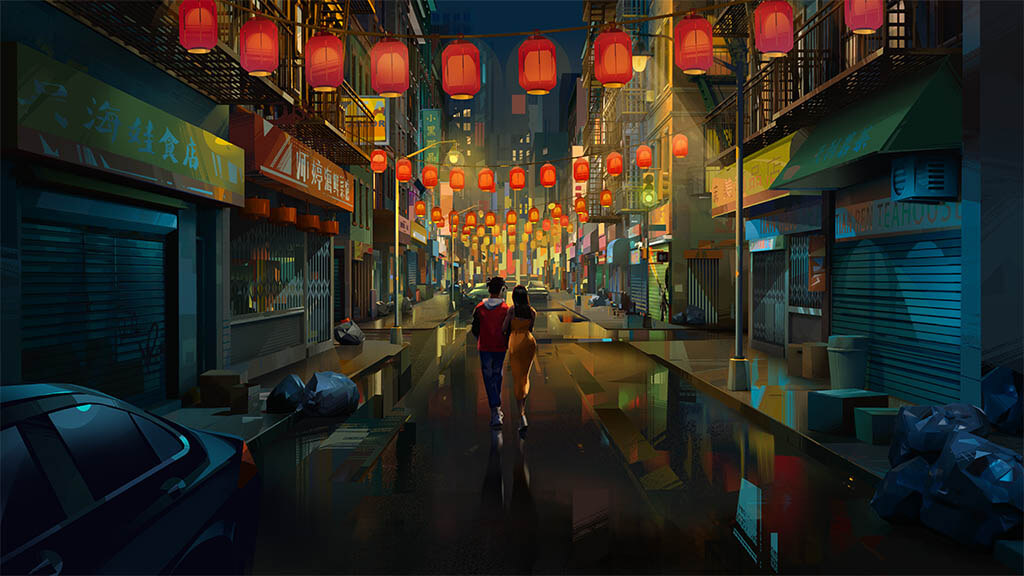
Reds and greens were prominent colors for the Chinatown environment.
“The energy of Entergalactic was special. The music played a big part in it… It’s important that the acting and the emotional response from the characters hit with the music. … We made sure that the animation was working nicely, but when I saw the score, it definitely made the shot a hundred times better. There were a few sequences where we didn’t know where the beat hit. Fletch would say, ‘If you hit exactly that frame, you’ll be on the beat.’ It was really hard.”
—Chrissy Metge, Digital Producer, DNEG Animation
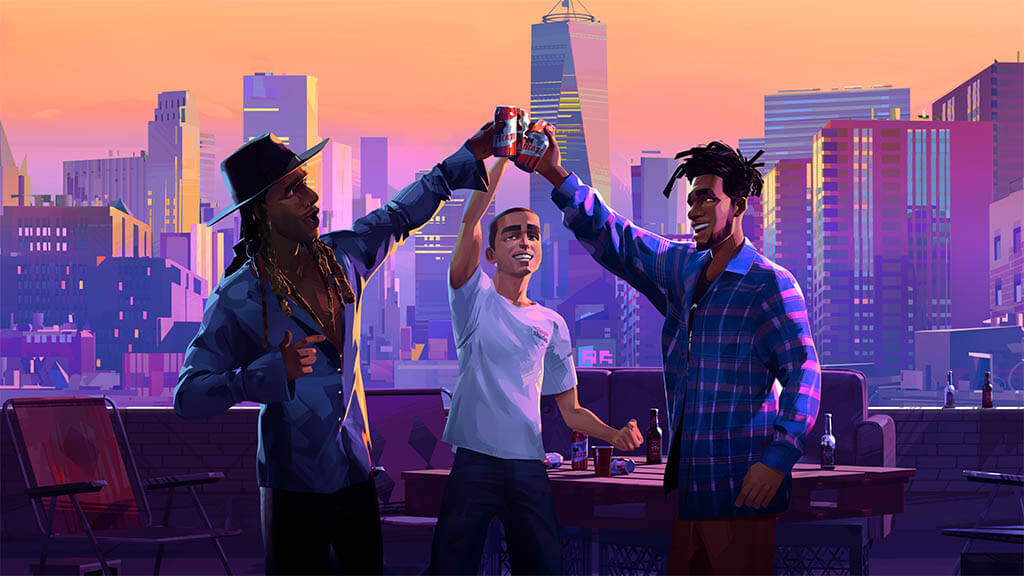
One of the motion tests involved three characters sitting at a table together.
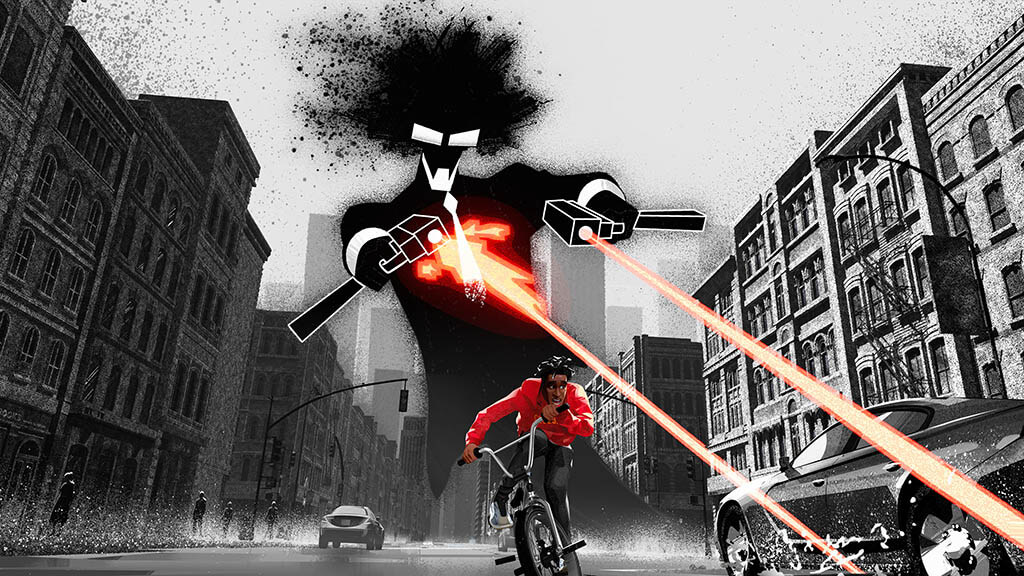
The red in the hoodie was kept to ground Jabari in the Nightmare sequence.
“The director said to me on the first meeting, ‘I want you to take the audience into the painting,’ My response was, ‘No worries. We’ll do that.’” A test was done to turn a concept painting of Chinatown into a 3D set. “I wanted to make it so when you’re looking at the painting it came alive. We used Mari for all our paint work along with Nuke for compositing. The painting was broken down into individual Photoshop layers and those were used as a reference to paint our 3D versions. We painted the missing parts that you don’t see in a 2D painting so [the virtual camera could move freely in the environment].”
—Archie Donato, Visual Effects Supervisor, DNEG Animation
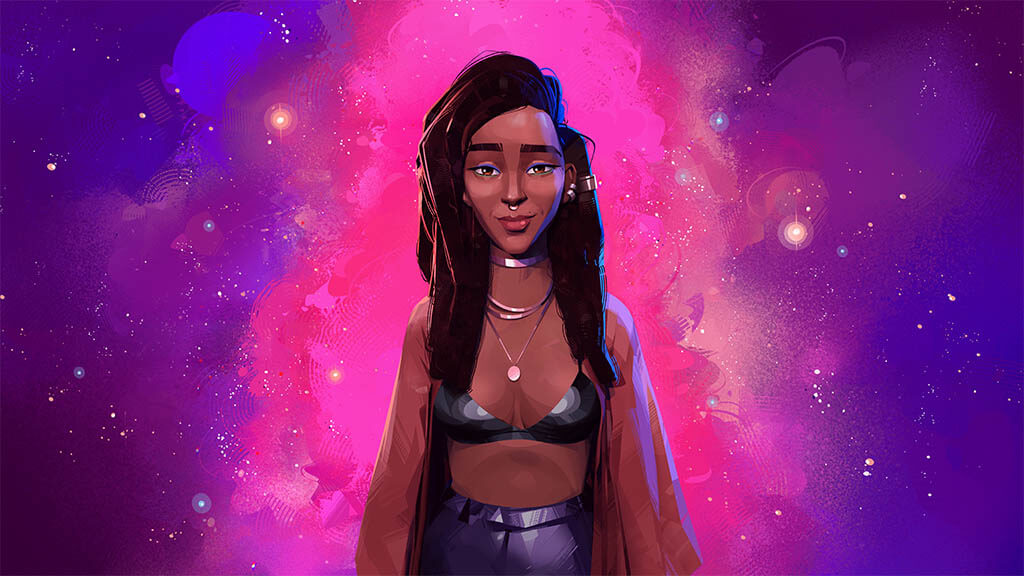
The love interest in Entergalactic is the neighborly photographer Meadow.
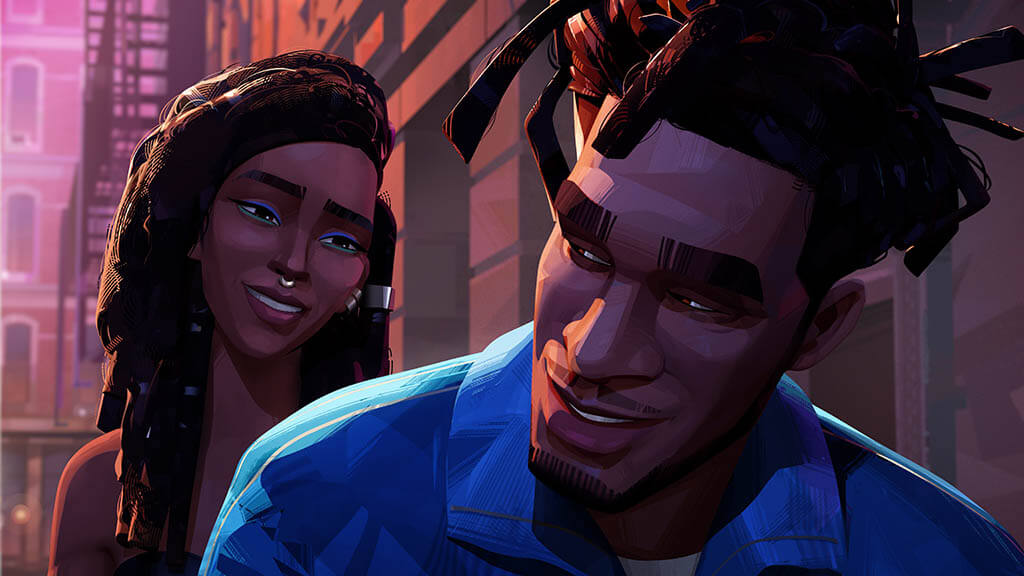
It was important to make viewers forget that they are watching animated characters.
Inspiration for animation style did not come from Spider-Man: Into the Spider-Verse. “The big difference is that Entergalactic is intimate while Spider-Verse is more dynamic,” notes Kapil Sharma, Animation Director at DNEG Animation. “I Lost My Body was one of the things that inspired us.” Establishing the visual guidelines were the paintings of Art Director Michal Sawtyruk. “The director said to me on the first meeting, ‘I want you to take the audience into the painting,’” recalls Donato, who at the time did not fully realize the extent of the request being made by Fletcher Moules. “My response was, ‘No worries. We’ll do that.’” A test was done to turn a concept painting of Chinatown into a 3D set. “I wanted to make it so when you’re looking at the painting it came alive,” Donato notes. “We used Mari for all our paint work along with Nuke for compositing. The painting was broken down into individual Photoshop layers, and those were used as a reference to paint our 3D versions. We painted the missing parts that you don’t see in a 2D painting so [the virtual camera could move freely in the environment].”
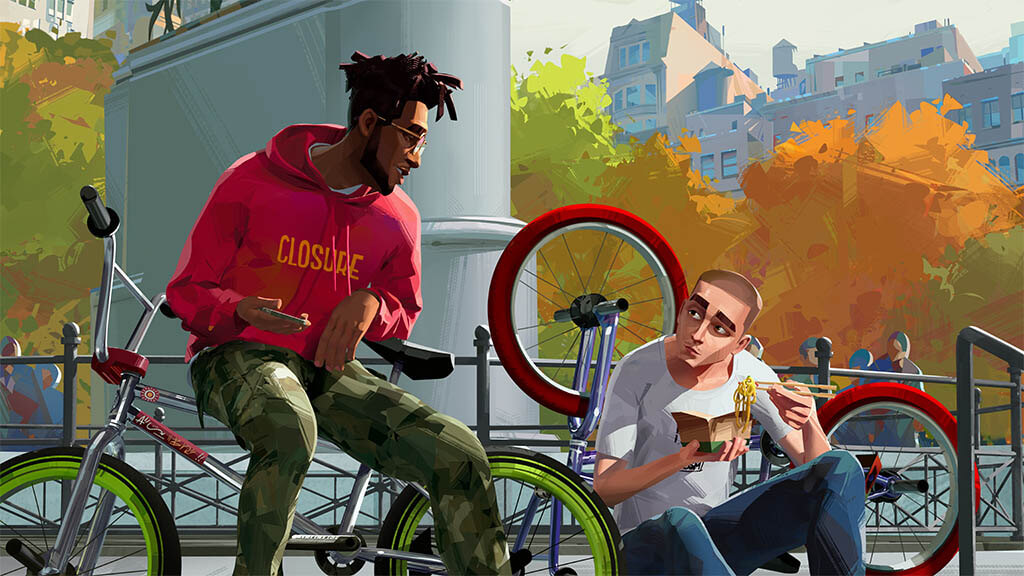
The clothing down to the t-shirts were carefully considered for each shot.
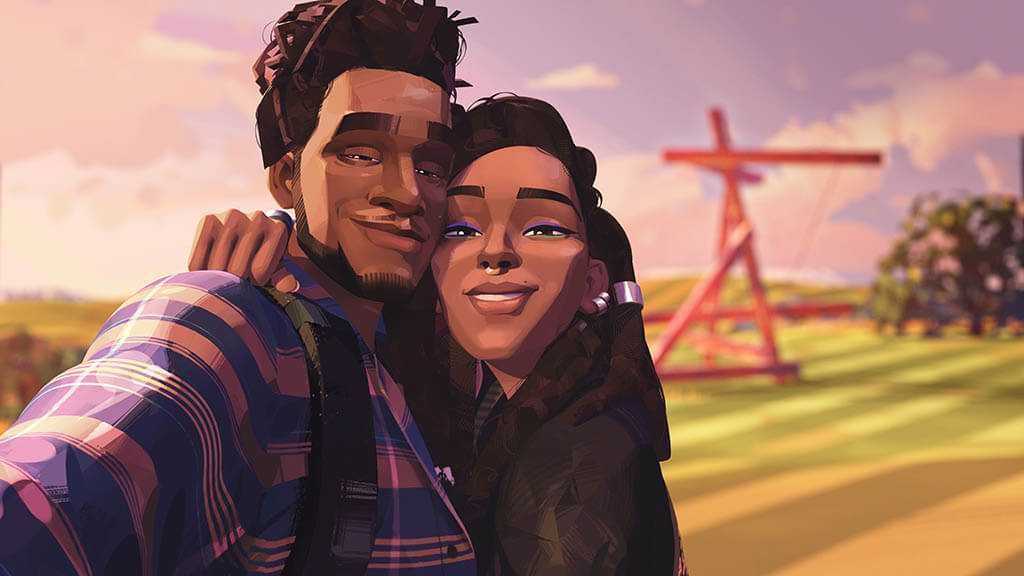
Jabari takes a selfie with Meadow.
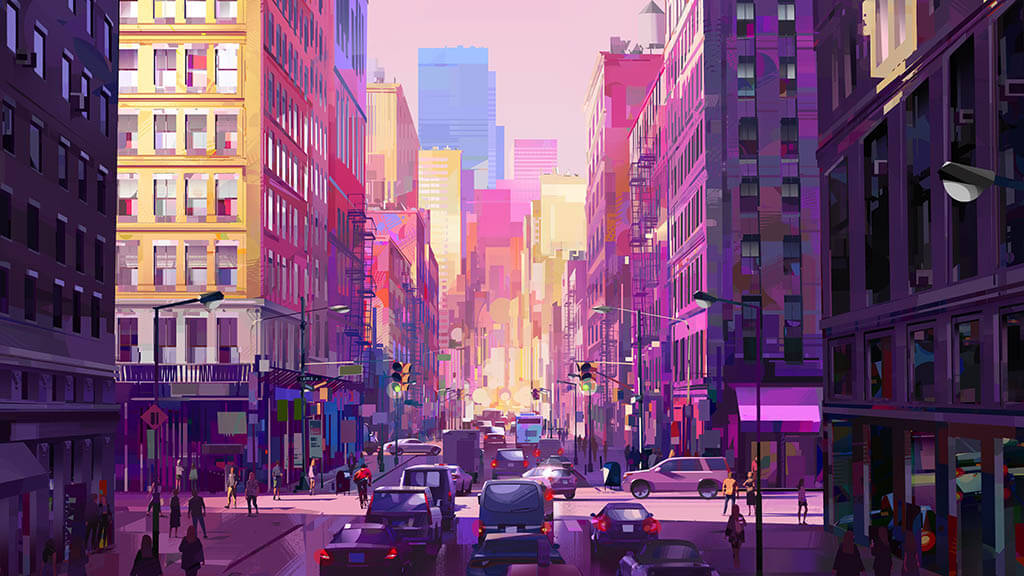
Google Maps was consulted to construct New York City in a realistic manner.
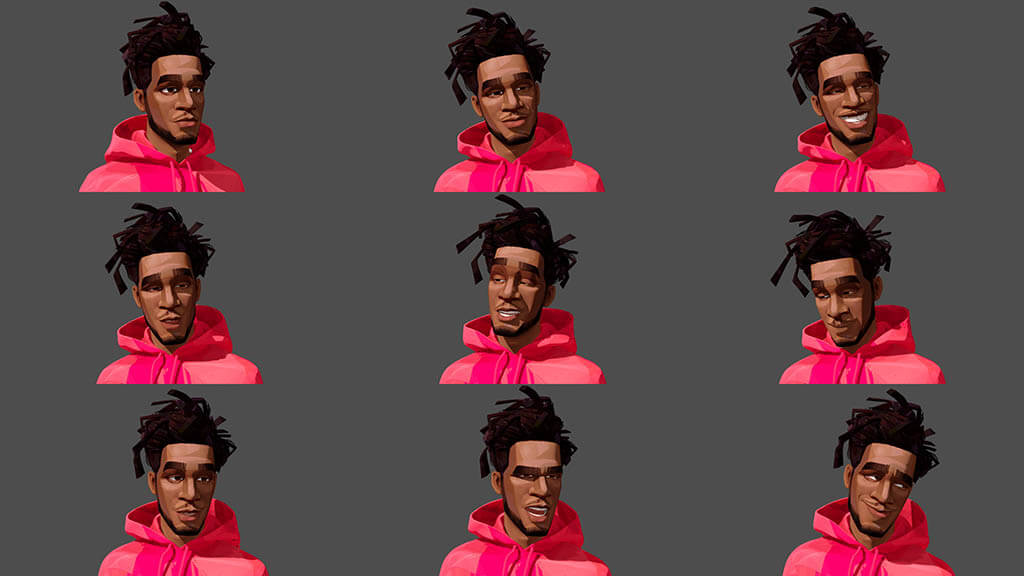
The faces of characters were designed to resemble their voice actor counterparts.
A new pipeline had to be completely reconfigured with shaders being rewritten. “It was a mixed bag,” Donato explains. “For some effects we used Houdini, but the difficulty of it was that they wanted to make the 3D animated effects look 2D. Some of it was truly hand-drawn animation. We would scan line art and mix and match the 3D effects with the 2D effects together. Nuke was a huge part in putting the drawings back into the film because they needed to be recolored or made smokier for transparency reasons. It was reinventing the wheel from scratch in a lot of ways.” Simulations were not straightforward. “Kapil was animating on variable steps so we were not just locked to 2s,” Donato adds. “We were doing 2s, 3s and 4s. At times we had shots that were 8s, which I have literally rarely ever seen. That made our effects life absolute misery because effects cannot simulate steps. They had to come up with the tools to simulate normally and then basically start to skip around and do variable rates with the simulations. It was a major challenge.”
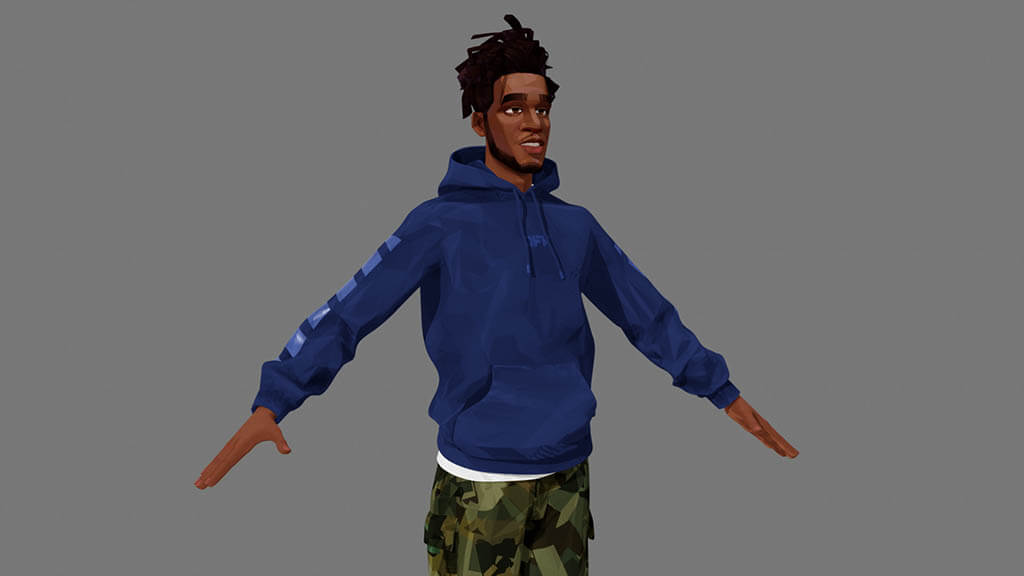
It was important for animators to go for gestures that were genuine rather than over the top.
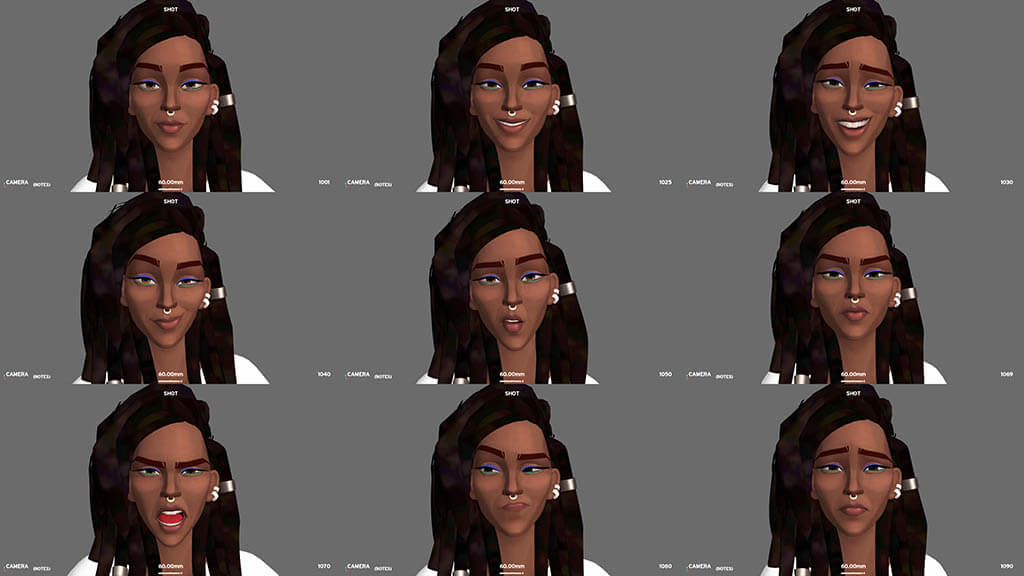
Various facial expressions developed for Meadow.
Over-the-top physical gestures and facial expressions that are a trademark of animation were to be avoided. “We wanted the face to be organic,” Sharma notes. “Most of the heavy lifting was done with [the protagonist] Jabari. We spent quite a few weeks posing him. Once we knew how to deal with the character design and the art style of these faces, then it was a matter of doing different things with each character and showing them to Fletch. We wanted to make sure that the characters come close to the real actors. You’re trying to copy exactly the same but have its own look.” Most of the time restraint was shown for the BMX riding sequences. “It was something that Fletch was quite keen about,” Sharma remarks. “Right away, I was proposing, ‘Lets go crazy with the stunts, but we had to rethink because Jabari rides mostly under the influence, so it’s in a very chilled manner. Fletch has friends with BMXs. so he had a good knowledge about that as well. With the BMX, we were pushing the limits [at times], but we didn’t want to do that with the actual performance [of the characters]. We wanted to make sure that we got a genuine performance [so audiences forget that they are watching animated characters].”
“We wanted the face to be organic. Most of the heavy lifting was done with [the protagonist] Jabari. We spent quite a few weeks posing him. Once we knew how to deal with the character design and the art style of these faces, then it was a matter of doing different things with each character and showing them to Fletch [director Fletcher Moules]. We wanted to make sure that the characters come close to the real actors. You’re trying to copy [them] exactly the same but have [the character have] its own look.”
—Kapil Sharma, Animation Director, DNEG Animation
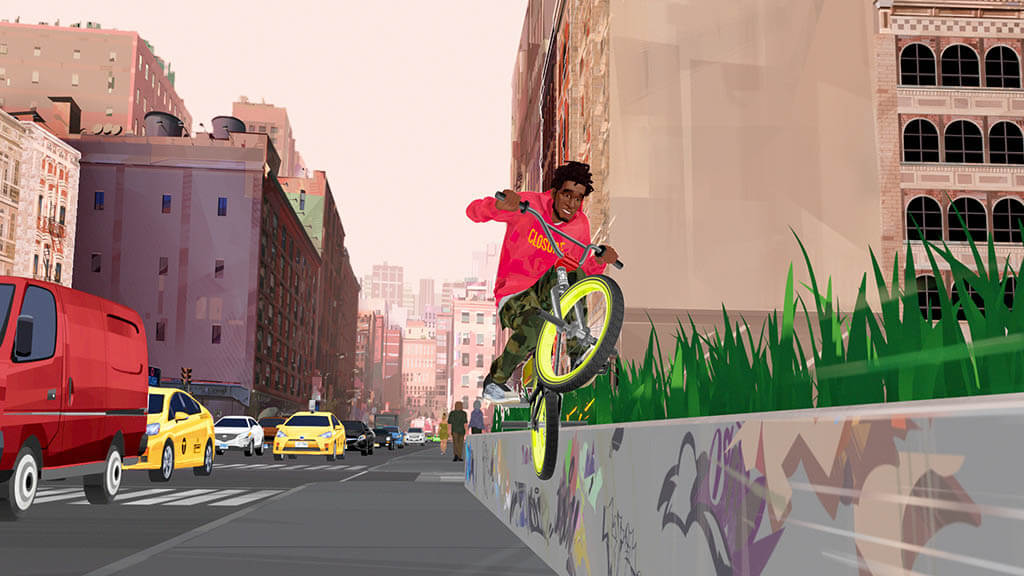
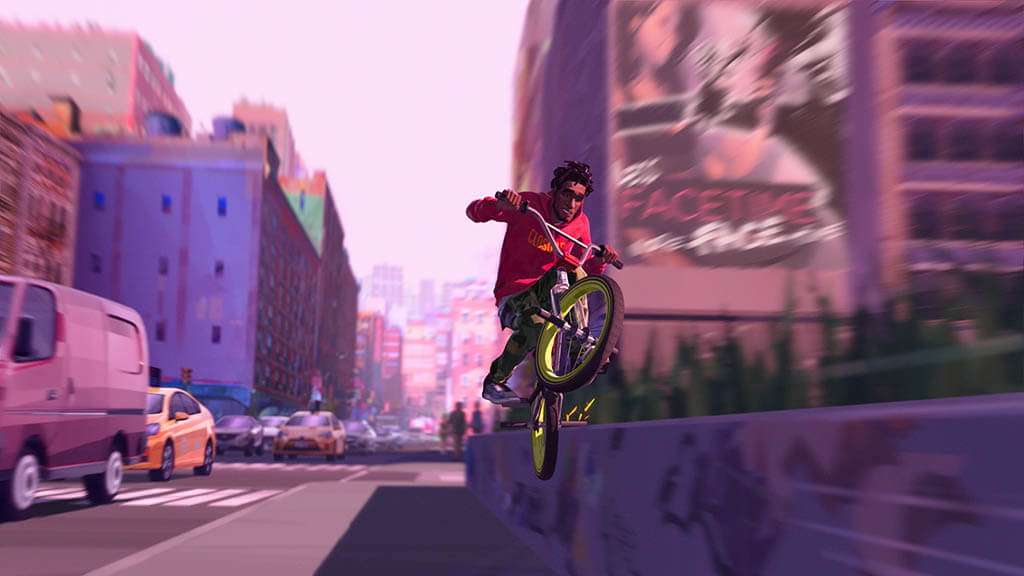
Jabari is talented in maneuvering his BMX through the streets of New York City. Most of the time he rides in chilled manner because he is under the influence.
Driving the narrative is the eighth studio album by Kid Cudi, which shares the same name as the animated feature. “The energy of Entergalactic was special,” Metge observes. “The music played a big part in it, and for us it was difficult because we didn’t have the music because of security.”A beat sheet was provided instead. “It’s important that the acting and the emotional response from the characters hit with the music,” Metge states. “We had to spend more time in the edit and come back to the crew at DNEG Animation, then get back into edit and then show it to Kid Cudi, and doing that loop again.” For the animation team, it was a guessing game. “We made sure that the animation was working nicely,” Metge adds, “but when I saw the score, it definitely made the shot a hundred times better. There were a few sequences where we didn’t know where the beat hit. Fletch would say, ‘If you hit exactly that frame, you’ll be on the beat.’ It was really hard.”
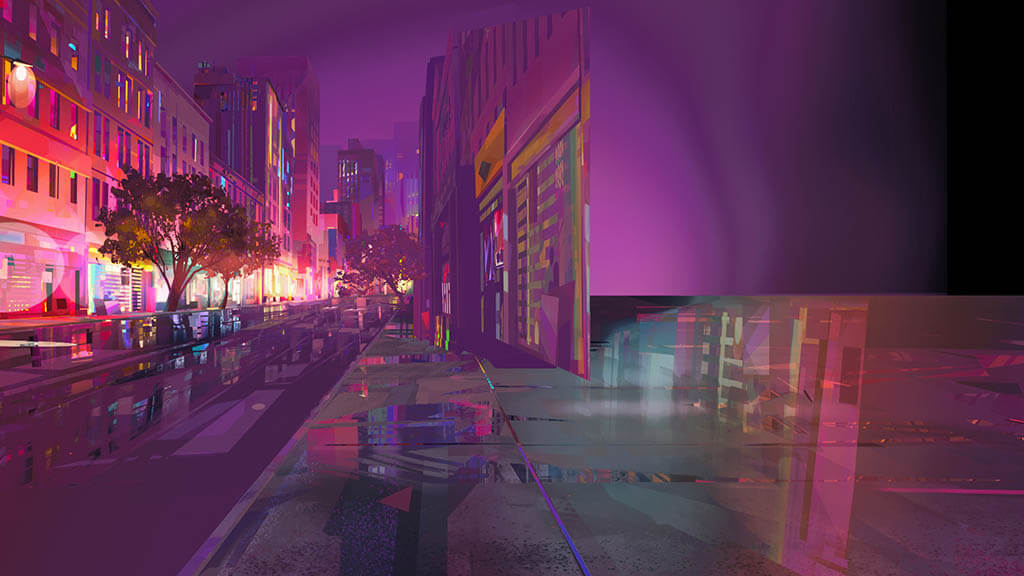
Paintings by Art Director Michal Sawtyruk established the overall visual aesthetic.
Along with the grounded real-life moments, there are the cosmic and nightmare sequences. “It was like several movies within a movie when you think about it in terms of styles,” Donato observes. “The Nightmare has a completely different feel and style to the movie all together. Jabari is being chased by his own artwork that wants to kill him. It’s a tricky idea. The rest of the movie had static, locked-off cameras, so we didn’t go into Spider-Verse territory where you’re flying off of the buildings. The Nightmare was the exact opposite. We wanted crazy cameras. It’s in black and white, with the only color being the red hoodie worn by Jabari.” The drug-induced travels through the galaxy were treated as music video and not the usual representation of what has been captured by NASA and the Hubble Space Telescope. Explains Donato, “The director said, ‘I want it to look like somebody painted it and we’re flying through the actual painting.’ I was sitting with my team and telling them, ‘This cloud will go on this layer, and [in that layer] we need the meteors flying by fast.’ Everything was broken into three dimensions.”
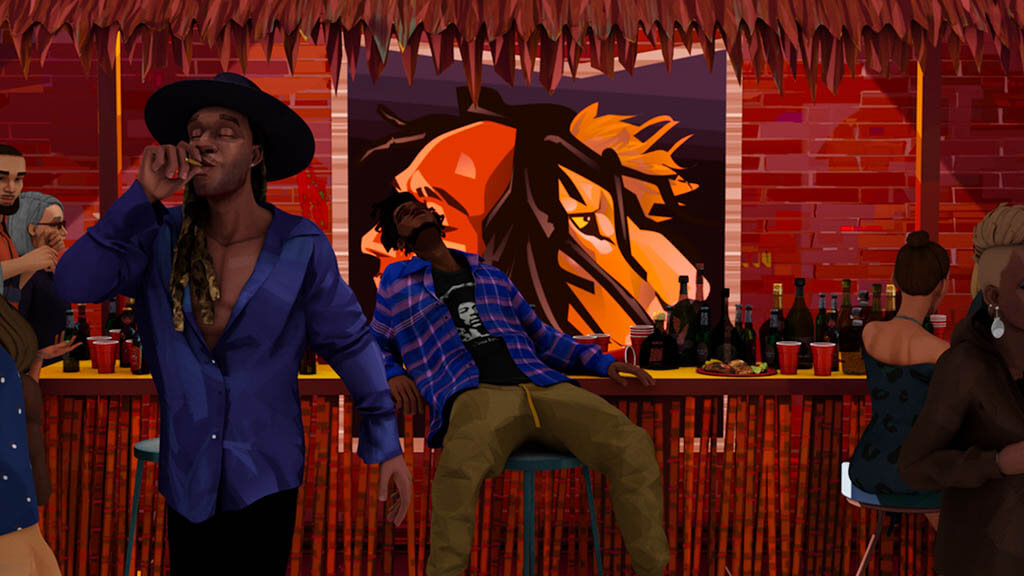
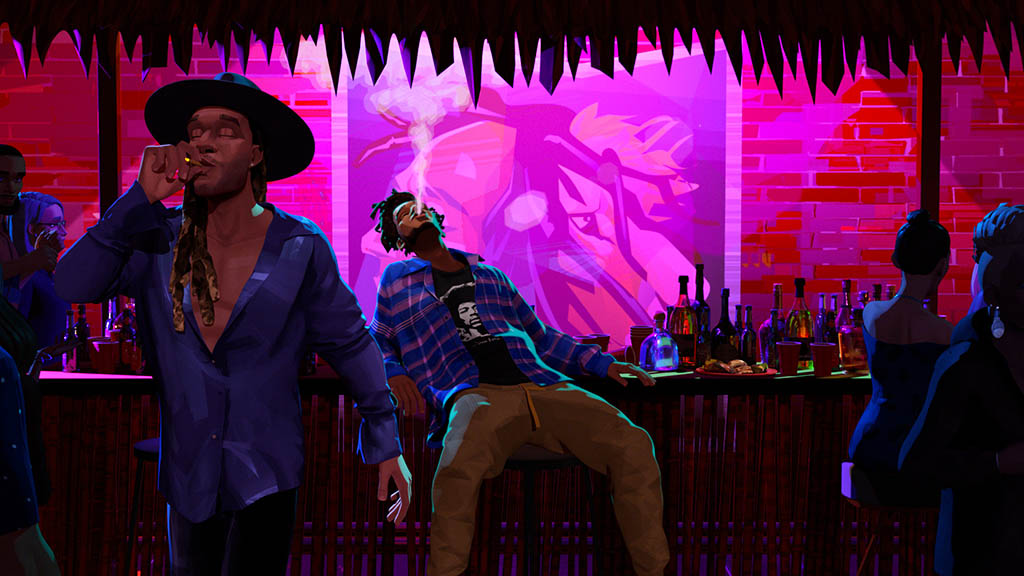
Shaders were written to make the 3D-animated effects look flatter and in-camera.
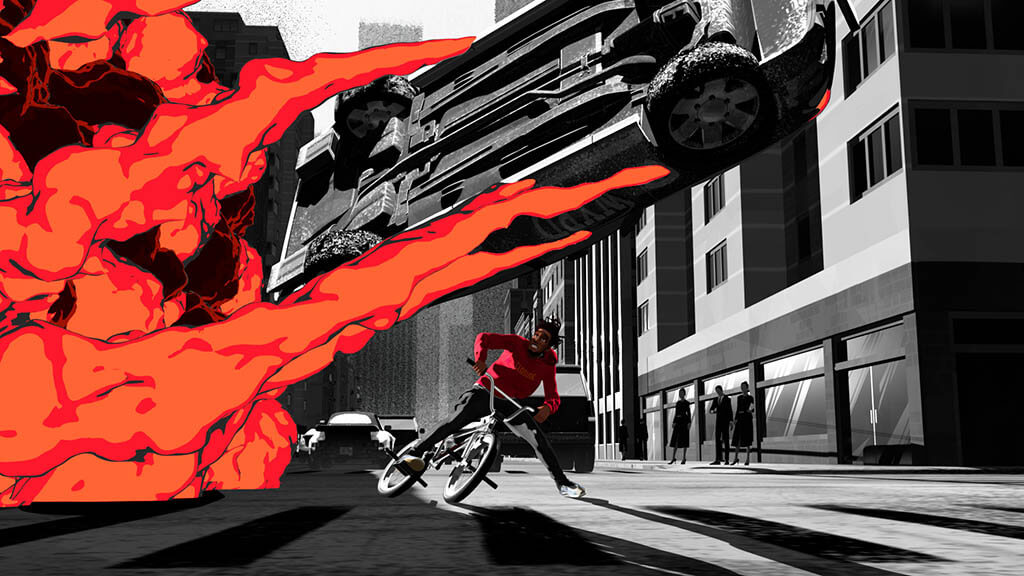
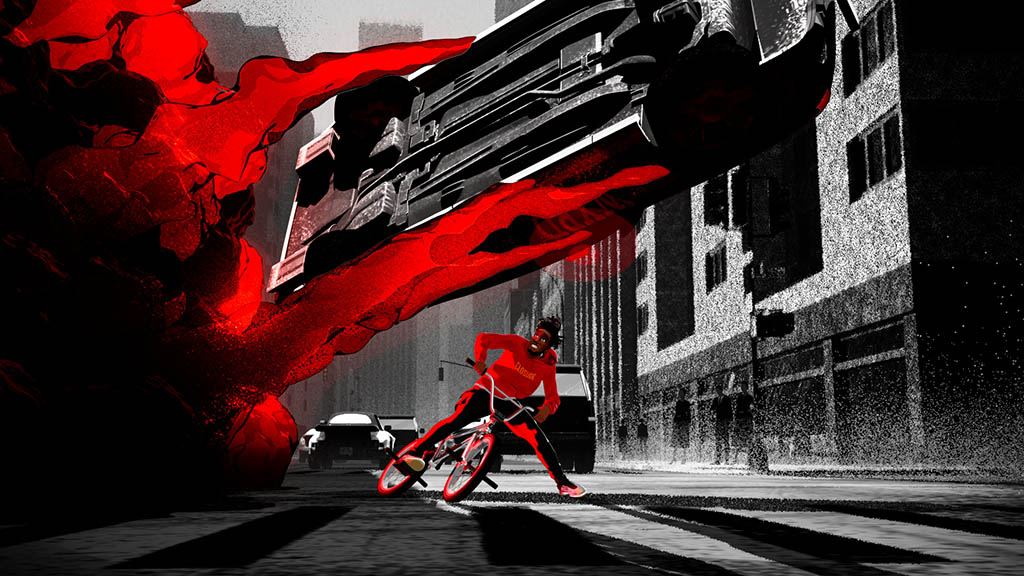
The Nightmare sequence has an entirely different camera language and color palette than the rest of the movie.
“The Nightmare has a completely different feel and style to the movie all together. Jabari is being chased by his own artwork that wants to kill him. It’s a tricky idea. The rest of the movie had static, locked-off cameras, so we didn’t go into Spider-Verse territory where you’re flying off of the buildings. The Nightmare was the exact opposite. We wanted crazy cameras. It’s in black and white, with the only color being the red hoodie worn by Jabari. … The director said, ‘I want it to look like somebody painted it and we’re flying through the actual painting.’ I was sitting with my team and telling them, ‘This cloud will go on this layer, and [in that layer] we need the meteors flying by fast.’”
—Archie Donato, Visual Effects Supervisor, DNEG Animation
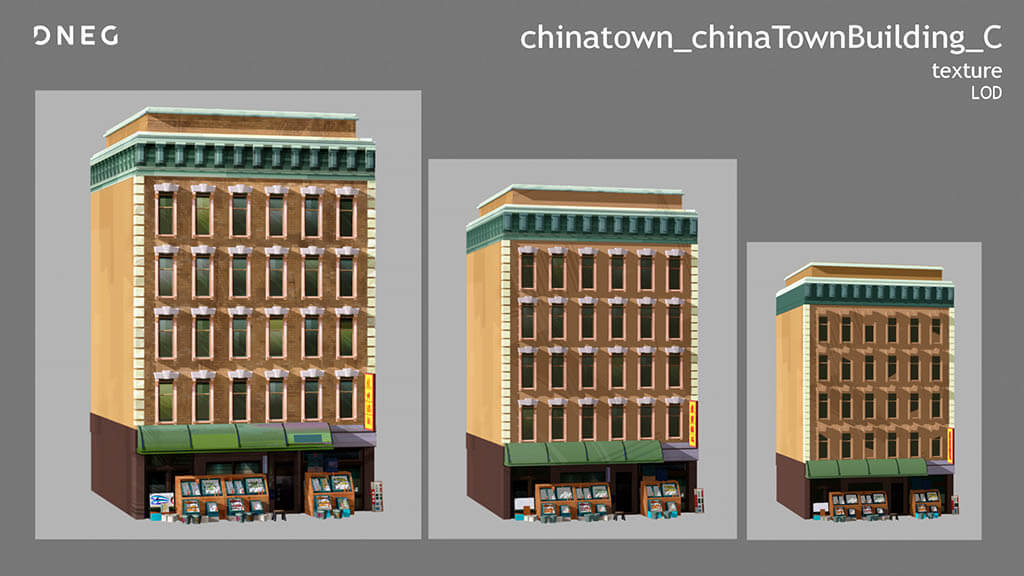
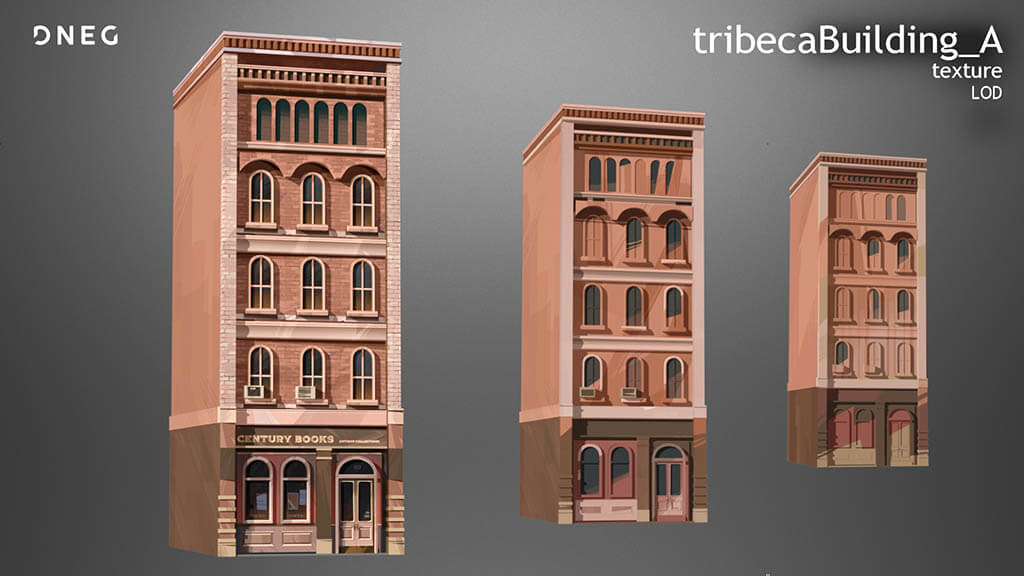
Top: 3D buildings found in Chinatown. Bottom: Textured models of buildings in the Tribeca neighborhood of New York City.
There were negatives and positives being a pandemic production with everyone working remotely. “I’m a mum,” Metge states. “I started on the show when [son] Hunter was four and he’s seven now. From that standpoint, it was nice to be around for him, but the human nature of it was interesting because we are more in each others’ lives. Everybody knew when he had his bath time or dinner! You got to meet everyone’s dogs and cats, loved ones and in between. We were suddenly thrust into each other’s worlds in way that I don’t think we’ve ever been part of before. Because of that and all of the different time zones, the show is successful, because it brought all of us close together. We were in each other’s lives whether we wanted to be or not! We bonded as a fabulous team should bond. We all went out to make sure it was an amazing experience, even if it was virtual.”